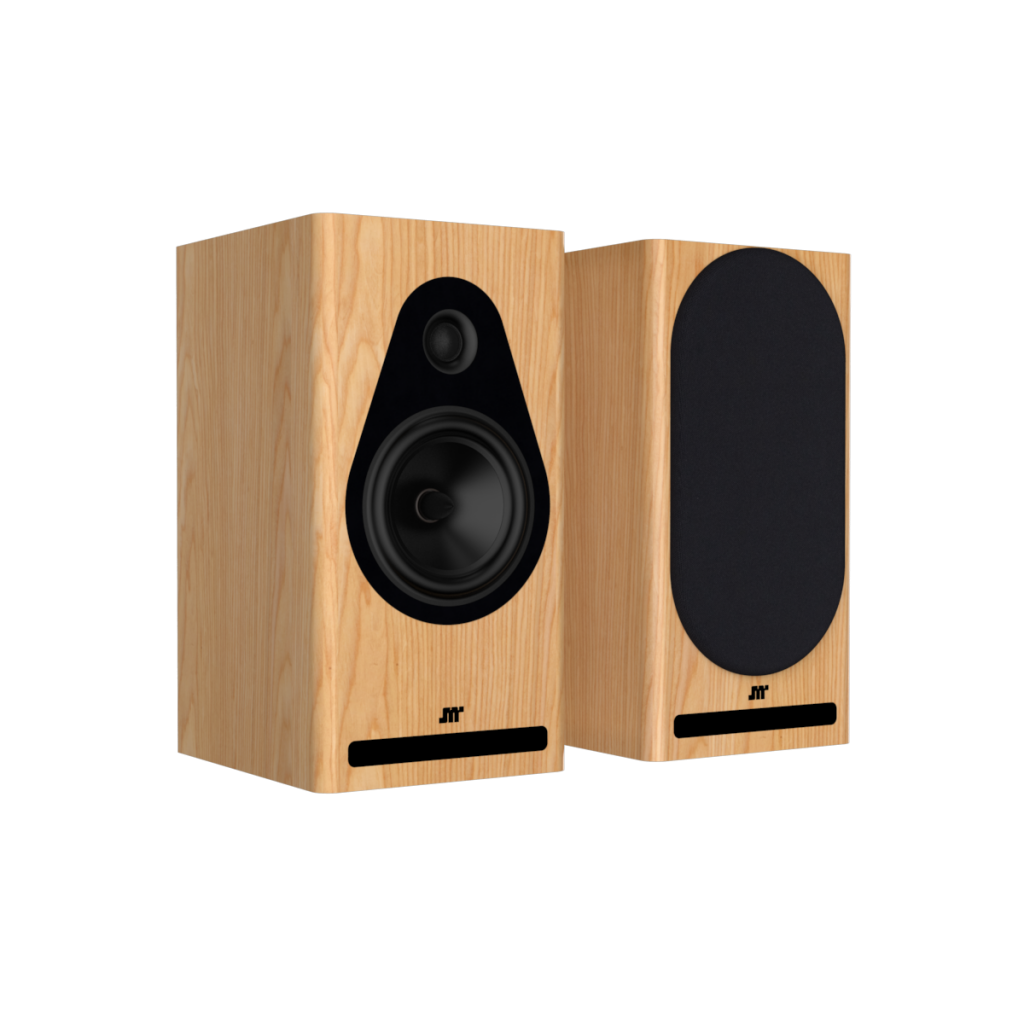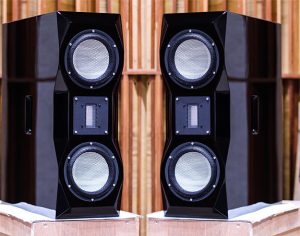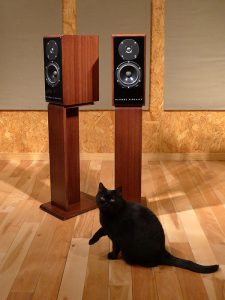What car does your mechanic drive, what food does your nutritionist eat, and what surgery does your doctor elect for himself? These questions are intriguing because they concern what experts do rather than what they say. Actions speak louder than words, we can all agree, particularly in an economy where people have so many incentives to lie or obfuscate the truth.
For the same reason, I have always been highly intrigued by what sound systems my hi-fi dealers listen to at home. Not only am I fonder of stereos than I am of cars and surgery, there are few industries more dominated by snake oil and hyperbole than audiophilia. What my hi-fi dealer privately listens to at home is the closest thing to his oath.
This last year, one of the Twin Cities' respected hi-fi dealers passed away, leaving a household full of exotic stereo gear to his widow. The widow in turn contracted with a friend of mine, another stereo salesman, to dispose of the equipment. My friend, in the process of inventorying and listing the equipment, agreed to let me demo the heart and soul of the decedent's system, a pair of pristine JM Reynaud Duet speakers. The Duets, I have subsequently learned, are identical to the current line of Reynaud Bliss speakers. (The name was changed for trademark reasons. You can read a review of the Duet by PF's Tom Campbell HERE.)
What interested me most about the demo was an opportunity to peer into the true preferences of a high priest of hi-fi. I did not expect to be smitten by the speakers, and I certainly didn't expect to end up buying them. The whole experience was a bit like running into—and marrying—a beautiful woman in the wilderness.
JM Reynaud is a family-held, artisan manufacturer of hi-fi speakers in France. The company has been making speakers since 1967, though they remain relatively unknown to all but serious audiophiles on this side of the Atlantic. The reasons for the obscurity are unclear, though the price point may play some role. At the low end of the price spectrum are the Bliss speakers, which list for $2000 per pair, and at the top of the spectrum are the Concordes, which list for $14,000. Jean Marie Reynaud, the founder, died a few years ago and the company is now run by the son, Jean Claude Reynaud.
After retrieving the Duet/Bliss loudspeakers from my friend, I brought them home and connected them to my brand-new Cambridge Audio CXA 60 (60-watt) integrated amplifier via Blue Jeans Cables and then served them source material of all genres from a brand-new Marantz 6006 CD player. For reference, I compared them periodically to a pair of acclaimed KEF LS50s and a pair of Paradigm Studio 10v5s.
What first surprised me—literally leaping right out of the speakers—was the geometry of the Bliss loudspeakers' soundstage. From the KEFs and Paradigms, I have become accustomed to a listening field that resembles a shallow, 3-dimensional rectangle (cuboid) across the floor, with the bulk of the sound emanating from the speaker loci on the right and left. By contrast, the Bliss loudspeakers produce a more spherical soundstage in which projections can occur anywhere within a globe enveloping the speaker loci. Depending upon the mix, instruments are likely to appear behind, in front of, or perfectly between the speakers. During our first five minutes of Pink Floyd's Animals, my friend and I looked sidelong at each other in disbelief after a sound effect went whizzing over our left shoulders! There were no mood-altering substances at work, I can assure you.
The next thing that struck me about the Bliss loudspeaker is how naturally they reproduce cellos and human voices. Having served as a performance cellist in orchestras and combos, I am a bit fastidious when it comes to reproduction of this instrument. While listening to Yo-Yo Ma perform Bach's cello suites, for example, I can hear wood in the notes. I can also hear fingers against the fingerboard and Yo-Yo's breath. Similarly, in Jolie Holland's voice on "Old Fashioned Morphine," I can hear minor laryngeal dissonance, which adds to the realism and semantic profundity of her otherwise narcotic, laconic drawl.
All granularity aside, these speakers present a very coherent and pleasant overall sound, whether with jazz, rock, or classical music. They are versatile. I have thrown everything at them, and they handle it all well, from Floyd to Yo-Yo, Oscar Peterson, and the reference work "Contate Domino." Jazz is perhaps my favorite genre through this speaker, with folk rock and classical being a close second. While the KEF LS50s also excel with these genres, the LS50s can generate ear fatigue in their brightness, at least when coupled with the Cambridge. (Cymbals can sometimes become unhinged through the KEFs.) The Bliss loudspeakers are warmer; and with driving rock, the Paradigm Studio 10's are probably warmer yet still.
Of course, no speaker is perfect. What are the pitfalls? I have identified two. First, while the bass is generally very solid, bass amplitude is not what I'd consider to be perfectly linear up and down the scale. A note in a walking bassline, for instance, might be slightly louder lower in the register than two pitches above, giving rise to occasional boominess and subtle drop-outs. I leave open the possibility that this phenomenon is not a speaker defect but a placement and/or stand problem. I would be curious to demo JM Reynaud's "Magic Stands", his patented speaker stands that employ dual Helmholtz Resonators (a technology used in mufflers) to scrub the low end of undesirable interference. It is possible that the stands will solve the issue.
Second, while all forms of guitar, including classical, acoustic, and electric, sound very natural through this speaker, its mid-range emphasis can perhaps become grating when there are layered, distorted guitars at work, as in the so-called shoe-gaze genre. For instance, tracks from Swervedriver's I wasn't Born to Lose You lack the smoothness that my Paradigms purvey. I'm wondering if the Minnesota band Low might also suffer. If your diet consists mainly of hard-driving, distorted music replete with mid-range harmonics, you may wish to think twice about the Bliss loudspeakers. (I've been told that Magic Stands can smooth out the mid-range, as well.)
I, for one, didn't think twice about the Bliss loudspeakers. I fell in love with these speakers in about 5 minutes and am now looking forward to our years of partnership. Of course, none of this would've come about absent the fortuitous opportunity to peer into the house of a late hi-fi master. Thank you, Sir. May you and Jean Marie Reynaud rest in musical peace.
Bliss Loudspeakers
Retail: $2000 / pair
JM Reynaud
US Distributor
Amherst Audio
Image courtesy of JM Reynaud.
Addendum
As a brief follow up to my review, I'd like to add two points: First, I've been loving these speakers more and more. Second, my Magic Stands have arrived. While I'd eventually like to devote a review entirely to the stands, it's worth mentioning now that they've reduced the subtle bass boominess that I identified in my review. I'm now convinced that the resonance I was hearing was less a product of the speakers than the room. Whatever the theory, the problem is moot. The Blisses and Magic Stands are a highly symbiotic pair.
NEWS: Word has just been received from JMR that by the end of next month both the Bliss and Bliss Silver will no longer be in production. Worldwide sales of the two Blisses has fallen off as customers turn to the Euterpe Supremes in their stead. According to Jean Claude Reynaud, the Euterpe Supreme outperforms the Bliss Silver, even with Magic Stands, at what seems to many customers to be a moderate increase in cost. I will be very sorry to see especially the Bliss Silver leave the line and expect there will be a short term increase in demand for them, as there was for the classic Trente when it was discontinued.
Ryan Pfeiffer is a backcountry canoeist, big game hunter, recipe writer, classical cellist, and songwriter with several critically-acclaimed experimental folk albums. He has contributed articles to legal, fishing, survivalist, and audiophile publications. His musical tastes are as varied as his interests and include everything from the Pogues to Pink Floyd, Brian Eno, Rossini, Borodin, and cowboy yodeling. He received a BA in philosophy (Phi Beta Kappa) from Carleton College and a law degree with high honors from the University of Iowa.

































